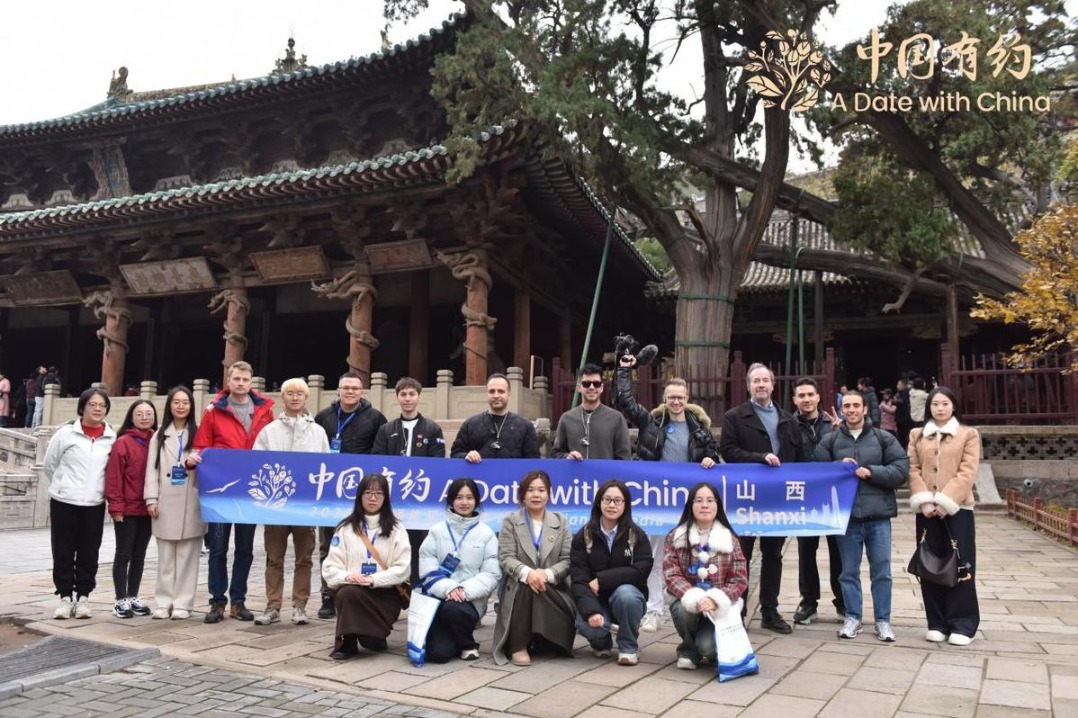Research reveals details of destroyed temple site
By Yang Feiyue | China Daily | Updated: 2024-09-25 06:43
For Liu Siliang and his team, surveying the Yongning Temple site in rural Siyugou village in Wu'an county, Hebei province, was like trying to put back together a puzzle that was created hundreds of years ago.
The site was among many locations where cultural relic protection workers have carried out field investigations since the launch of the fourth national cultural relics census in November last year. The workers were attempting to uncover and better understand the stone tablets and other relics that were destroyed there during past conflicts.
The site was placed under national protection in 2007.
"Although some parts of the stones are eroded and uneven, with pits and marks, the text is still relatively clear, suggesting they date from the Ming Dynasty (1368-1644)," said Liu, who works as a researcher at the Wu'an cultural relics protection center.
It took just a few minutes for Liu's team to identify the nature of the stones as being integral to a historical stone scripture pillar.
"There should be other parts that go with it," Liu said.
"Moving forward, we will work on finding and restoring the other parts as much as possible," he added.
Liu's team focused primarily on re-examining the eight inscribed stone tablets and checking for further damage or deterioration, while keeping an eye out for unidentified cultural relics.
The team consists of members from different technical fields, including those from the Hydrogeological Brigade of the Coal Geology Bureau of Hebei, the Hebei University of Engineering and the Shanghai-based Athena Data Analytics and Service Co.
Yuan Wei, from the Hydrogeological Brigade of the Coal Geology Bureau of Hebei, used a real-time kinematic device to enhance the accuracy of satellite positioning data at the temple.
The device allows for real-time positioning with centimeter-level precision. "It has made the information we've collected very accurate," said Yuan, who has been with the survey team for more than three months.
As he moved the RTK device back and forth in front of an engraved stone pillar, it emitted a beeping sound. The RTK's display soon showed the coordinates of the stone, along with the creation date and other details of a survey file.
"Previously, measuring the length and thickness of things such as courtyard walls was time-consuming. But now, with the RTK, we just have to mark a few points, and the distance between them can be quickly and accurately measured," he explained.
As Yuan has often conducted coalfield and rare resource surveys, he is very proficient in using the RTK.
"Although I don't normally work with cultural relics, over these months, I've seen countless treasures in rural fields and learned a lot about cultural heritage. I feel very proud to be part of the fourth national cultural relics census," he said.
In addition to the fieldwork team, other teams responsible for sorting information and data from the fieldwork offer expert guidance. By working side by side, they provide technical support for data collection and map drawing.
Cao Yan, from the Hebei University of Engineering, has been helping put fieldwork data in an internal database since the beginning of her summer vacation.
"All the data has been backed up every step of the way to ensure security, and all operations have been recorded for future review," Cao said.
Studying cultural relics and museology, she has followed the census team to several villages across Wu'an. "These cultural relics and ancient buildings are things we see regularly, but we never thought about the rich historical significance they carry," Cao said.
During her time participating in the cultural relics census, she and her classmates have learned many stories behind the relics.
"This experience has given us a deeper understanding of the importance of cultural heritage preservation, and has strengthened our sense of respect, love and responsibility for it," she said.
Wu'an abounds in cultural relics and has been chosen as a pilot site for the census. Its experiences will be referred to by other regions.
In addition to thoroughly verifying the cultural relics listed in the third national census, the focus this time is also on discovering newly identified immovable cultural relics, which involves identifying temples in the villages, locating old houses and roughly determining the era they belong to.
As of now, the city has re-examined more than 1,100 immovable cultural relics and discovered more than 100 new ones, bringing the total number of immovable cultural relics surveyed to over 1,220.
Once new cultural relics are discovered, they will be promptly reported to the relevant cultural relics authorities. Wu'an has also launched a citywide campaign promoting the census, which aims to foster a positive environment where the general public actively participate in, learn about and support the census efforts, local authorities said.
























